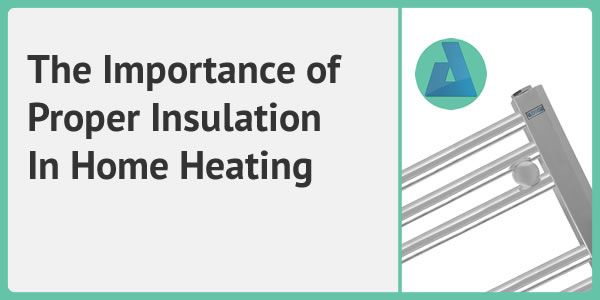There's a direct link between your home's insulation and how efficiently it stays warm during colder months. Without proper insulation, heat escapes easily, forcing your heating system to work harder and driving up energy costs. You can improve comfort and reduce expenses by ensuring walls, attics, and floors are well-insulated. Proper insulation also helps maintain consistent temperatures, preventing drafts and cold spots. Whether you're building new or upgrading an existing home, investing in quality insulation pays off in long-term savings and better energy efficiency. Your home—and your wallet—will thank you.
Key Takeaways:
- Proper insulation reduces heat loss, keeping homes warmer with less energy.
- Effective insulation lowers heating costs by improving energy efficiency.
- Well-insulated homes maintain consistent temperatures, enhancing comfort.
- Insulation helps reduce environmental impact by cutting energy consumption.
- Quality insulation extends the lifespan of heating systems by reducing strain.
Understanding Home Insulation
A well-insulated home is the foundation of efficient heating, helping you maintain comfort while reducing energy costs. Insulation works by slowing the transfer of heat, keeping warm air inside during winter and blocking excess heat during summer. Without proper insulation, your heating system must work harder, leading to higher bills and uneven temperatures throughout your home.
Types of Insulation Materials
Before choosing insulation for your home, it’s helpful to understand the different materials available. Each type has unique properties suited for specific areas of your house, from attics to walls and basements.
| Material | Best For |
| Fiberglass | Attics, walls, floors |
| Cellulose | Enclosed spaces, retrofits |
| Spray Foam | Gaps, hard-to-reach areas |
| Mineral Wool | Fire-resistant applications |
| Reflective Foil | Radiant heat barriers |
- Fiberglass is affordable and easy to install.
- Cellulose is eco-friendly and offers good soundproofing.
- Spray foam provides superior air sealing.
Perceiving the strengths of each material helps you make an informed decision for your home’s needs.
Insulation R-Values and Their Importance
Insulation effectiveness is measured by its R-value, which indicates resistance to heat flow. The higher the R-value, the better the material insulates. Your climate and the area of your home being insulated determine the ideal R-value for maximum efficiency.
Further, R-values are cumulative, meaning you can layer insulation to achieve the desired performance. For example, combining batts and blown-in insulation in your attic can enhance thermal resistance. Always check local building codes to ensure your insulation meets recommended standards for your region.
The Role of Insulation in Heating Efficiency
You might not realize it, but insulation is the unsung hero of your home’s heating system. Without proper insulation, heat escapes through walls, ceilings, and floors, forcing your furnace or boiler to work harder to maintain a comfortable temperature. This not only strains your heating system but also leads to higher energy consumption. By investing in quality insulation, you create a thermal barrier that traps warmth inside, reducing heat loss and improving overall efficiency. The result? A cosier home and lower energy bills.
You’ll find that different areas of your home require varying levels of insulation, depending on factors like climate and building materials. For example, attics and basements are often major sources of heat loss, so reinforcing insulation in these spaces can make a significant difference. Properly insulated homes maintain consistent temperatures, reducing the need for constant thermostat adjustments. This means your heating system operates more efficiently, extending its lifespan while keeping your energy costs in check.
How Insulation Affects Heating Costs
Among the most immediate benefits of proper insulation is its direct impact on your heating expenses. When your home lacks adequate insulation, heat escapes rapidly, forcing your heating system to run longer and more frequently. This increased workload translates to higher energy bills, especially during colder months. By sealing gaps and adding insulation, you minimize heat loss, allowing your system to operate more efficiently and reducing your overall energy consumption.
Among the long-term savings, you’ll also notice that insulation pays for itself over time. While the upfront cost may seem significant, the reduction in monthly energy bills can offset the investment within a few years. Additionally, a well-insulated home puts less strain on your heating system, potentially lowering maintenance and repair costs. By prioritizing insulation, you’re not just saving money—you’re also making a smarter, more sustainable choice for your household.
The Impact on Home Comfort and Air Quality
Quality insulation does more than just cut costs—it enhances your home’s comfort and air quality. Without proper insulation, drafts and cold spots can make certain rooms feel uncomfortably chilly, even when your heating system is running. By maintaining a consistent indoor temperature, insulation eliminates these uneven conditions, ensuring every corner of your home stays warm and inviting. This balance is especially important for households with young children, elderly members, or anyone sensitive to temperature fluctuations.
Quality insulation also plays a key role in improving indoor air quality. Gaps and poor insulation can allow outdoor pollutants, dust, and allergens to seep into your home, aggravating respiratory issues and reducing overall air purity. Proper insulation acts as a barrier, keeping unwanted particles out while retaining clean, conditioned air inside. This creates a healthier living environment, free from the discomfort of drafts or the irritation of airborne irritants.
Consequently, upgrading your insulation isn’t just about temperature control—it’s about creating a safer, more pleasant space for you and your family. A well-insulated home reduces the strain on your HVAC system, which means fewer fluctuations in humidity and fewer opportunities for mould or mildew to develop. The result is a home that feels consistently comfortable and supports better respiratory health year-round.
Common Insulation Problems
Your home's insulation plays a vital role in maintaining comfort and energy efficiency, but common problems can undermine its effectiveness. Issues like uneven temperatures, high energy bills, or drafts often point to insulation gaps, aging materials, or improper installation. Addressing these problems early can prevent further energy loss and ensure your heating system works optimally.
Another frequent issue is moisture build-up, which can degrade insulation over time and lead to mould growth. If you notice damp spots or a musty smell in your attic or walls, it’s a sign your insulation may need attention. Regular inspections help you catch these problems before they escalate, saving you money and maintaining a healthier living environment.
Identifying Insulation Gaps and Deficiencies
Deficiencies in your insulation can manifest in subtle ways, such as cold spots on walls or floors, or more obvious signs like ice dams on your roof in winter. Conducting a thorough inspection of your attic, basement, and exterior walls can reveal areas where insulation is missing or compressed, reducing its effectiveness.
Using a thermal camera or simply feeling for drafts around windows, doors, and electrical outlets can help pinpoint gaps. If your home feels chilly despite your heating system running constantly, it’s likely time to evaluate your insulation. Sealing these gaps and adding or replacing insulation can significantly improve your home’s thermal performance.
Seasonal Considerations for Insulation
Common insulation challenges vary with the seasons, requiring different approaches to maintain efficiency. In winter, heat loss through poorly insulated areas becomes more apparent, while summer may expose issues with heat gain, making your cooling system work harder. Adjusting your insulation strategy based on seasonal demands ensures year-round comfort.
During colder months, focus on sealing air leaks and adding insulation to attics and basements to retain heat. In warmer weather, reflective insulation or radiant barriers can help deflect heat away from your home. Understanding these seasonal needs allows you to optimize your insulation for maximum energy savings.
Hence, tailoring your insulation maintenance to seasonal changes not only enhances comfort but also extends the lifespan of your HVAC system. By staying proactive, you can avoid unnecessary energy waste and keep your home consistently cosy, no matter the weather.
Proper Insulation Installation Techniques
Not all insulation is created equal, and how you install it can make or break your home's energy efficiency. Start by ensuring your insulation material matches your climate and the specific area of your home you're insulating. For example, fiberglass batts work well in walls, while blown-in cellulose is ideal for attics. Pay attention to gaps and seams, as even small openings can let heat escape. Properly sealing these areas with caulk or foam before installing insulation will maximize its effectiveness.
You should also consider the R-value, which measures insulation's resistance to heat flow. Higher R-values are better for colder climates, but layering insulation incorrectly can reduce its performance. Always follow manufacturer guidelines and local building codes to avoid compressing the material, which can lower its R-value. If you're unsure about the process, consulting an expert or referring to detailed installation guides can save you time and money in the long run.
DIY Insulation Projects
Proper DIY insulation projects can be a cost-effective way to improve your home's warmth, but they require careful planning. Begin by assessing which areas need attention, such as attics, basements, or crawl spaces. Use the right tools—like a utility knife for cutting batts or a blower for loose-fill insulation—and wear protective gear to avoid irritation from materials like fiberglass. Measure twice and cut once to ensure a snug fit, as gaps will undermine your efforts.
You might find that some projects, like insulating around electrical wiring or pipes, are trickier than others. In these cases, take your time and research best practices to avoid fire hazards or moisture issues. While DIY can save money, don’t cut corners—poor installation can lead to higher energy bills or even damage your home. If a project feels beyond your skill level, it’s wise to pause and reconsider your approach.
When to Hire a Professional
Techniques for insulation vary by project complexity, and some jobs are best left to professionals. If your home has hard-to-reach areas, like vaulted ceilings or tight crawl spaces, an experienced installer will have the tools and expertise to handle them safely. Similarly, if you’re dealing with spray foam insulation, improper application can lead to off-gassing or uneven coverage, which a pro can avoid.
You should also consider hiring a professional if your insulation requires retrofitting or removing old material. Asbestos or mould in older homes poses health risks, and trained contractors know how to handle these hazards. Professionals can also perform energy audits to pinpoint exactly where your home needs insulation, ensuring you get the most bang for your buck.
Hire a professional if you’re unsure about the type of insulation your home needs or if local building codes require certified installation. They can provide warranties for their work, giving you peace of mind that your investment will last. While it may cost more upfront, professional installation often pays off in long-term energy savings and avoided repairs.
Maintenance and Upgrades
To ensure your home’s insulation remains effective, regular maintenance and timely upgrades are crucial. Over time, insulation can settle, degrade, or develop gaps, reducing its ability to retain heat. By staying proactive, you can avoid energy waste and keep your heating system running efficiently. Upgrading older insulation materials to newer, more efficient options can also significantly improve your home’s thermal performance and lower your energy bills.
To maximize the benefits of your insulation, inspect it periodically and address any issues promptly. Weather changes, pests, or moisture can compromise its effectiveness, so staying vigilant helps maintain a comfortable indoor environment. Investing in upgrades, such as adding insulation to attics or walls, can further enhance your home’s energy efficiency and reduce long-term heating costs.
Periodic Insulation Checks
With regular inspections, you can identify early signs of wear or damage in your insulation. Look for areas where insulation may have shifted, become compacted, or shows moisture stains, as these issues can undermine its performance. Pay special attention to attics, basements, and crawl spaces, where insulation is often most vulnerable.
With a thorough check, you’ll also spot potential entry points for drafts or pests that could affect your home’s warmth. If you notice any problems, such as mould or gaps, take action immediately to prevent further deterioration. A well-maintained insulation system ensures consistent heat retention and reduces strain on your heating system.
Modern Insulation Solutions
The latest insulation materials offer superior thermal performance compared to traditional options. Spray foam, cellulose, and rigid foam boards provide higher R-values, meaning they resist heat flow more effectively. Upgrading to these solutions can help you maintain a stable indoor temperature while using less energy.
The installation process for modern insulation is often quicker and less invasive, minimizing disruption to your home. Many newer materials are also eco-friendly, made from recycled or sustainable sources, aligning with energy-efficient home improvements. By choosing these advanced options, you can future-proof your home against rising energy costs.
For instance, spray foam insulation expands to fill even the smallest gaps, creating an airtight seal that prevents heat loss. This makes it an excellent choice for hard-to-reach areas or irregularly shaped spaces, ensuring no part of your home is left unprotected.
Conclusion
To wrap up, proper insulation plays a vital role in maintaining an efficient and comfortable home heating system. When your home is well-insulated, you reduce heat loss, lower energy bills, and create a more consistent indoor temperature. This not only enhances your comfort but also extends the lifespan of your heating equipment by reducing its workload. Investing in quality insulation ensures your home stays warm during colder months while minimizing unnecessary energy waste.
By prioritizing insulation, you take control of your home’s energy efficiency and contribute to a more sustainable environment. Whether you’re upgrading existing insulation or installing it in a new build, the long-term benefits far outweigh the initial costs. You’ll notice the difference in your heating performance and overall home comfort, making it a smart choice for any homeowner focused on efficiency and cost savings.
FAQ
Q: How does proper insulation affect home heating efficiency?
A: Insulation helps maintain consistent indoor temperatures by reducing heat loss. This means your heating system works less to keep your home warm, lowering energy use and costs.
Q: What areas of the home should be prioritised for insulation?
A: Key areas include attics, walls, floors, and basements. These spaces often have the most heat transfer, so insulating them properly can significantly improve heating performance.
Q: Can insulation improve indoor comfort in addition to energy savings?
A: Yes, insulation minimizes drafts and cold spots, creating a more even temperature throughout your home. This enhances comfort while reducing strain on your heating system.
Q: What types of insulation are best for home heating efficiency?
A: Fiberglass, cellulose, and spray foam are common options. The best choice depends on your home’s structure, climate, and budget. A professional can help determine the right material.
Q: How often should insulation be checked or replaced?
A: Insulation should be inspected every few years for damage, moisture, or settling. Older homes may need upgrades to meet current energy efficiency standards.


